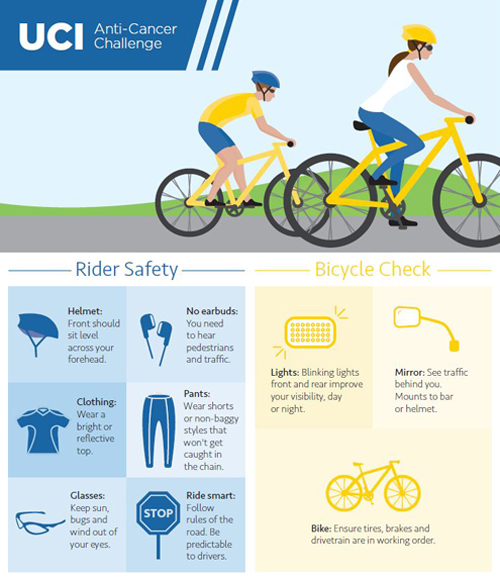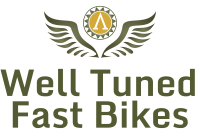
Average cyclist’s activity while riding: watching where they’re going. Average American driver’s activity while driving: everything but watching where they’re going. Here’s a few things the average cyclist can do to stay safe.
- Watch where everyone is going.
Don’t assume everyone on the road knows you’re there, and don’t assume everyone knows who has the right-of-way. Approach every intersection prepared to stop for visible traffic. I don’t even assume the guy in the left-turn only lane is actually going to turn left, and I certainly don’t assume the guy without any visible turn signal is actually going to go straight. Watch the front wheel, if you can, and be ready to stop safely as soon as you see it start to turn.
- Do use hand signals.
When you want to signal a right turn on a bicycle, do you bend your arm at a 90 degree angle with your hand up? Or with your hand down? If you don’t know, odds are the vehicle behind you doesn’t know either. Point with your left hand when making a left turn, and with your right when making a right turn: everybody will know what that means. And hold it for a few moments before the turn, then put your hand back on the handlebars to maintain control and immediate braking ability. I’ve never encountered the scenario in which vehicles behind me needed to know I was about to stop without already assuming I would: don’t you stop at the places everyone else does?
- Don’t be afraid to take over the lane.
You have equal rights to any lane of traffic. When I know I need to make a left turn at the next intersection, I make sure that no one in their right mind (you really can’t control for drivers who are out of their mind…) is going to think I’m going straight and pass me through the intersection by checking that no one is presently trying to pass me, and then moving over into the dead center of the lane – sometimes bias toward the yellow line, just to make sure – and hold a clear, steady hand toward the road I’m about to turn on. This also works if it’s a narrow lane and a driver trying to squeeze by is just a really bad idea – odds are you’ll recognize that situation better than the drivers behind you who just want to go their normal speed.
- Be super-extra vigilant when the sun is low.
Remember what I said in point #1? It goes double or even triple in the late evening, because the sun can suddenly be in a driver’s eyes, and he won’t see you until you’re a hood ornament. If you’re westbound, pay attention for cars behind you and stay as far onto the shoulder as possible, hopefully enough that if they miss you and drive by, they’ll actually miss you and drive by instead of plastering your rear wheel. Make eye contact if possible with all drivers when making a turn, especially turning west; or, if possible, wait for the intersection to clear before proceeding. The final alternative is to stay off the roads when you might be dealing with blind drivers.
- Oh, and wear a helmet! Maybe flashing lights, too.
No matter how safe you are, knowing the rules won’t keep your head from getting broken when it hits a car, a signpost, or the pavement: a helmet will. And wearing a helmet is something you can control, unlike everyone else on the road around you. In the flashing-light department, something with a random-flashing pattern tends to be more noticeable than a steady light, or a metronomic blink. Also something bright enough to land aircraft in a hurricane helps you stand out. And despite some common feelings (exacerbated, no doubt, by the Grand Theft Auto video games) drivers are generally not out to run you over: they may not notice you, or know how to drive when you’re around, but they don’t all want to solve that problem by just killing you.
There’s a certain amount of inherent risk when you’re travelling ten to twenty miles per hour slower than everyone else around you, especially in backcountry where often any cyclist in spandex deserves death. Minimize confusion, and you minimize your risk: by acting like the rest of moving traffic is supposed to, you can help people know where you are and where you’re going – and that you’d like to get there alive, if possible.
